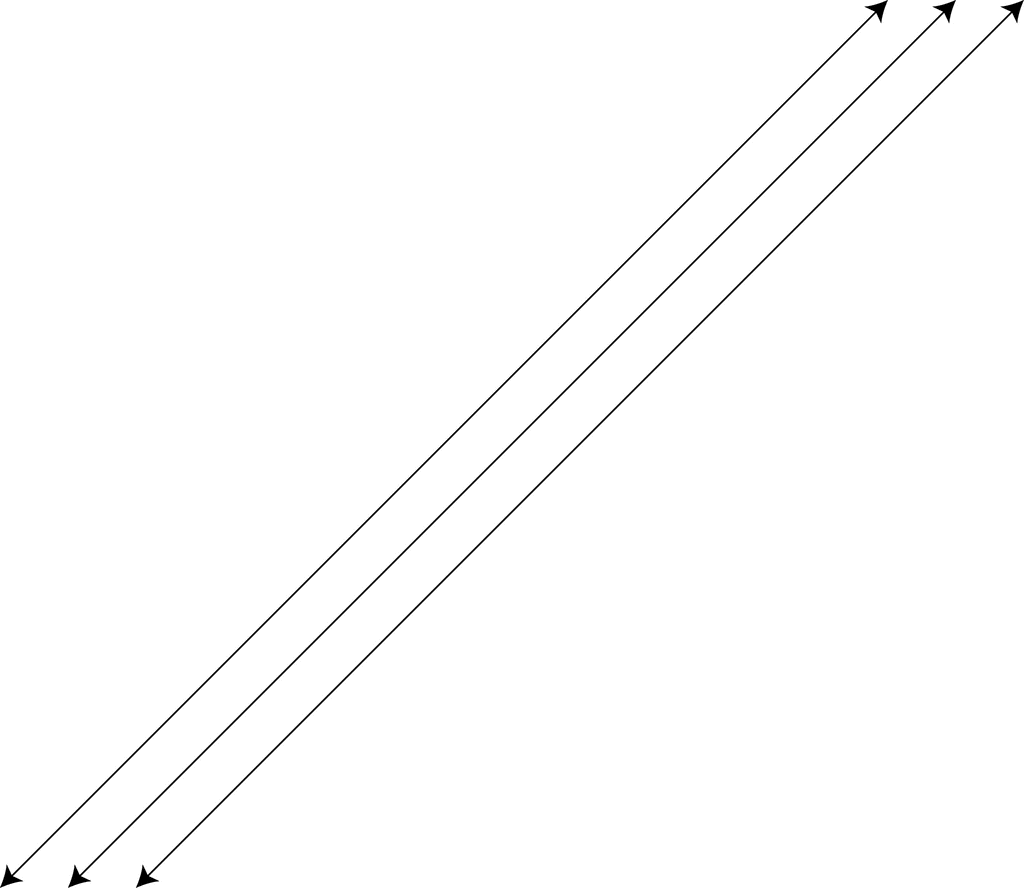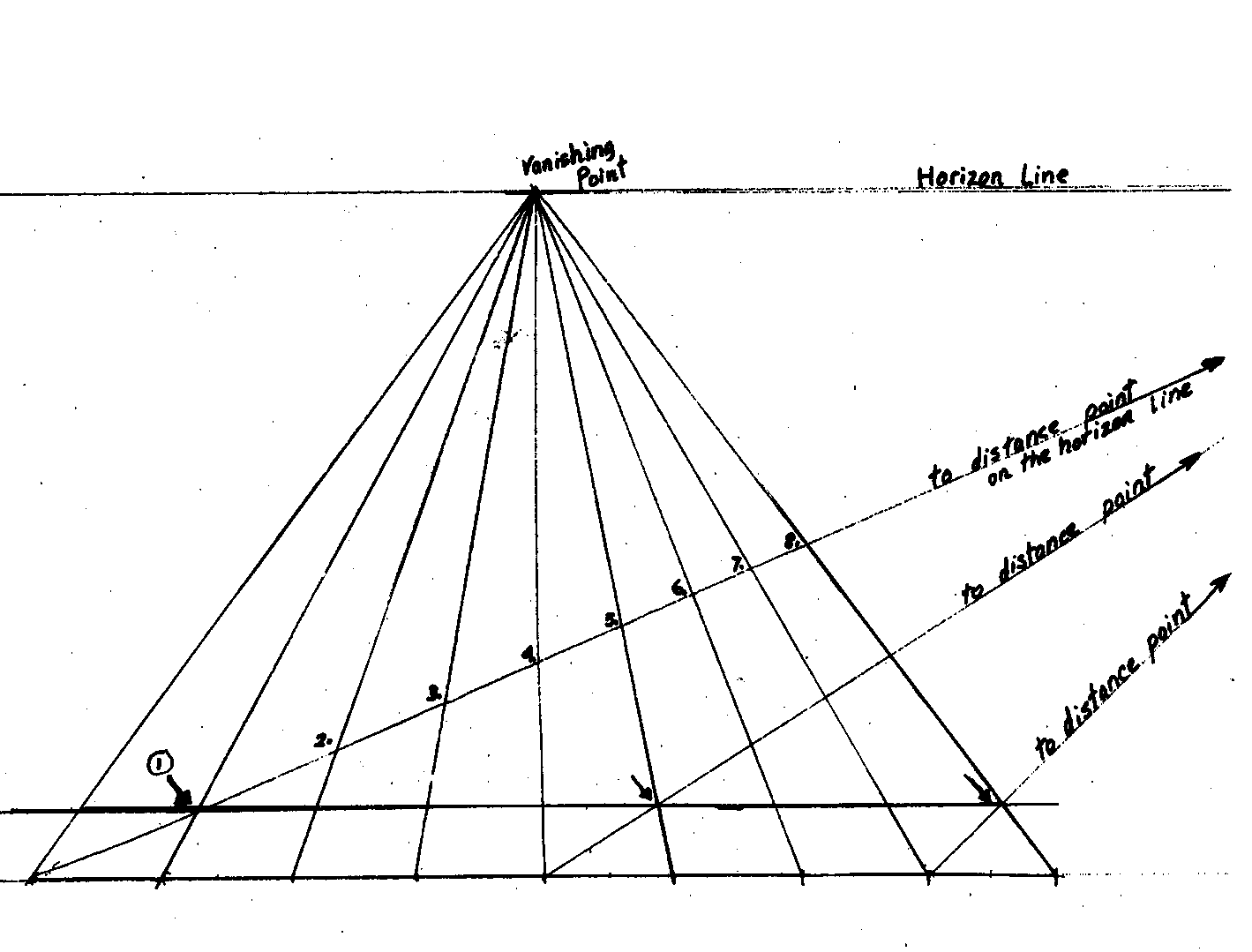You SEE with your eyes that the two lines obviously meet - not very far (it seems) beyond the limits of the camera's lens or our visual acuity. You never actually DO see the tracks meeting - but you presume that they must because you can draw the two lines on top of the photo - and it looks like they meet somewhere just fractionally beyond the resolution of the camera.
The limits of our visual acuity is the vanishing point. You said that we can perceive the distance between railroad tracks forever, but we can't, they converge at our angular resolution limit because we can't distinguish distances between points beyond that point, angles smaller than we can visualize.
So you conclude that parallel lines meet at some distance from the eye like maybe 10 miles or 100 miles or something...and base all of FET's optical properties on this, seemingly reasonable, claim.
That's our perspective indeed.
Now, let's talk about the building on the left. You can draw a line at roof level and another one at ground level and see that they intersect...but what you're claiming is that this intersection is happening at some distance from us - 10 miles, 100 miles - whatever. I'm claiming that...yes, the lines obviously intersect - but the DISTANCE at which they intersect is infinite.
Which means they never intersect, because infinity has no distance.
Now I hear you complaining.
About your flawed model of human perspective, indeed.
But look CAREFULLY at them in the picture. Do you see that the separation between the columns in the photograph is smaller in the distance than it is near to the camera?
Yes, that's quite clear with our perception of far away distances.
So here is what's happening. The closer together the roof line and the pavement line get - the more and more compressed the distance INTO the scene the picture becomes. The horizontal spacing between columns get smaller and smaller.
This is correct, and my point deals exactly with this.
So when the roof/pavement lines would be VERY close to touching, they'd be representing something a billion miles into the scene - and at the precise point where the "perspective lines" touch - we are INFINITELY far into the scene.
Geometric lines, yes. They would have to more and more shallow and will be 0 at infinity, which is never. This assumes we have infinite aperture, which we don't, our perspective appears to intersect when distances become indistinguishable from a point.
X, Y and Z are *ALL* shrinking as we go further into the distance.
So when the X or Y distance hits zero - so the Z spacings of our columns ALSO hits zero - and you get an infinite number of columns packed together into that last screen pixel as we approach the vanishing point.
An THAT is why parallel lines meet at INFINITE Z and not 10 miles or 100 miles as FE'ers seem to believe.
Except our perspective lines of our vision aren't parallel.

Angular distances decrease to the limits of aperture of the optics so the distances between are indistinguishable, this is why the vanishing point and the horizon is finite, not infinite. You miss this entirely and pretend geometric angles can represent this when it can't.
The horizon is simply the distance in which the ground and sky are at angles smaller than the eye can see and so the horizon would be an illusion based on this.
You simply can't distinguish distances since your line of sight converges distances.
I can quite understand why this fooled you - and I have to say that it hurts my brain even thinking about it. But regardless - this is what truly happens.
We aren't being fooled here, it's just you misunderstanding human perspective and applying it to geometric lines.
x' = k.x / z
y' = k.y / z
(x,y,z) is a point in the real/virtual world (in a coordinate system where the "camera" is at (0,0,0) and z is distance away from the camera).
(x', y') is the point on the screen where that point ends up (in a coordinate system where the center of the screen is (0,0)).
k is a constant that relates to the 'lens' of the virtual camera and the size/resolution of the screen.
These two equations are built into every 3D computer game - every simulation, every CGI movie. It's so fundamental that it's even built into the hardware of 3D graphics cards in your PC.
We do this because it's the only formula that produces realistic pictures.
So if one railroad rail is 1 meter to the right of the camera (x=+1) - then at what value of 'z' does it arrive at the vanishing point?
x' = 0
x = +1
What is 'z'?
0 = k . 1 / z
z = k / 0
...hmmm - that's a problem because you can't divide by zero without getting an infinity for 'z'.
And that's the mathematical reason why parallel lines meet at infinity under perspective.
That's not perspective. Perspective would be the point which the distances between rails become unresolvable from a point.
You take parallel lines and they basically never meet, but you can't use them for perspective because perspective lines are not parallel, implying they meet at a distance by the angular distances receding.
Parallel lines meet at infinite distance, which means never, so you represent perspective lines as

When in reality, they are:

Therefore what you claim with the VP doesn't work.
The height of the image is the height of the subject (the tree) multiplied by the distance from the pinhole from the film and divided by the distance to the subject (the tree).
You make the mistake here as well. If I draw a straight line at an angle from an object at X height above the ground to the ground (where the the distance between objects to have a geometric vanishing point as you describe), it will always be at an angle above the ground unless the lines are parallel (which would mean infinite distance), so you conclude that the point of convergence or the horizon is at infinity. However, if this were true, then perspective lines could never approach each other, but they do, they would have to be parallel, which they aren't. This tears apart your flawed perspective model that doesn't work in reality.
The only way to discount this derivation of the math for perspective is to deny that light travels in straight lines - or to deny that the method of similar triangles is valid.
Actually, all I need to claim is that optics always have finite aperture for perceiving angular distance, and then what you claim is false when brought up against reality. Optics do always have finite aperture, therefore you are incorrect/
So the pinhole camera is proof of the equations - and the equations are proof of the laws of perspective.
The observation that perspective operates in Z as well as in X and Y is further proof that FET's concept of finite vanishing points is untrue.
No they aren't, they fail to represent perspective lines in reality, and so don't relate to perspective at all.
I think this argument is completely watertight - and so far, nobody in FE land has been willing to even discuss it. Tom just says "it's just a diagram"...which is a rather fundamentalist anti-science, anti-math position - and if he were honest and consistent then he'd have to call "bullshit" on all of Rowbothams diagrams too!
A diagram of geometric lines isn't gonna represent the variable of human perspective limitations.